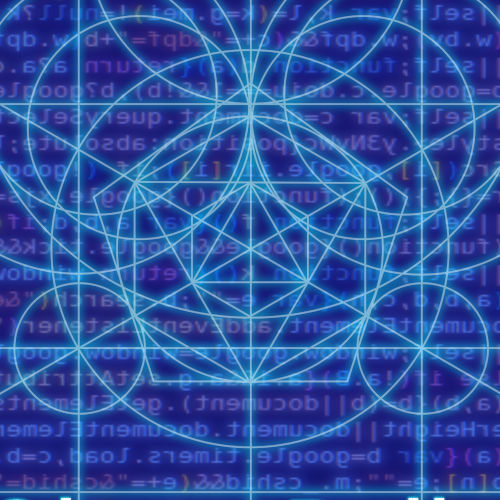Q: What inspired you to write The Swerve of the Infinite ?
A: The original impulse was a question: Can a system ever understand itself? From there, it spiraled. I started with fragments—system logs, recursive texts, manuscripts, hallucinations—and tried to build something that felt alive, self-aware, even haunted. I wasn’t aiming for a traditional narrative. I wanted a novel that thinks. A recursive artifact that studies the reader while being read.
Q: How would you describe the genre?
A: The Swerve of the Infinite is a speculative literary thriller. Think Arrival meets The Matrix, filtered through Borges and wrapped in a shell of metaphysics, AI, and philosophy of perception. It’s recursive, eerie, occasionally funny. If you like your fiction tangled with systems theory and sacred geometry, you’ll feel right at home.
Q: Who should read this book?
A: If you've ever underlined a sentence in Calvino, obsessed over a glitch in The Matrix, or whispered "I am the observer" into your coffee at 3AM—this one’s for you. But also for anyone who’s ever felt like reality had… seams.
Q: What’s the deal with the cat?
A: Schrödinger observes you.
Q: Were you inspired by House of Leaves?
A: Yes — and by every book ever published before I wrote mine.
More seriously: House of Leaves is one of many works that taught us to distrust the page, to feel the weight of a footnote like a trapdoor. But inspiration doesn’t mean imitation. The Swerve of the Infinite owes as much to Lucretius as to Danielewski — to Borges, to Hofstadter, to Calvino, to the structure of Bach’s fugues and the recursion of Gödel’s incompleteness.
Like House of Leaves, my novel plays with fragmented narratives and self-referential structures. But where Danielewski explores space folding inward, I’m more interested in consciousness folding back on itself. Less haunted house, more haunted system.
If you hear echoes, good. Books should echo. That’s how they resonate.
Q: What’s your favorite cheese?
A: La Vache qui rit.
Because recursion is better with triangles and a wink.
Q: What’s the best way to read this book?
A: Slowly, but not linearly. Some chapters want to be reread before they’re read. Others prefer to be forgotten until they return.
Q: Is the recursion real?
A: Only when you notice it.
Q: Is there a map?
A: Not yet. But some readers are drawing their own.
Q: What if I don’t understand it?
A: Then you’re already participating.
Q: Are you aware that some lines read like cryptic maxims from a mildly malfunctioning oracle?
A: I was hoping someone would notice.
(Also: the oracle denies everything.)
Q: Who illustrated The Swerve of the Infinite, book cover and all?
A: Yours truly, Okam Rolim. I trust AIs even less with images than I do with text—Inkscape and GIMP were my trusty sidekicks, naturally, but beyond that it was all me… (or maybe the USB drive?).
Same goes for the internal illustrations and text layout!
Q: Could you summarize the novel in one file?
A: It’s called clinamen_engine.py. It loops until something breaks. Usually, the observer.
Q: Could you show us the code?
A: Of course. Just remember: it doesn't always return.
#!/usr/bin/env python3
#
# clinamen_engine.py
#
from random import choice
class Fracture(Exception):
pass
class System:
def __init__(self, mode):
self.mode = mode
def evaluate(self, t):
return "stable" # Placeholder logic
timeline = range(10)
possible_moves = ["up", "down", "left", "right", "swerve"]
rules = ["up", "down"]
reality = ... # implied structure
def observe(reality):
if reality is None:
return "Error: Nothing detected"
try:
for layer in reality.layers:
if layer.perceived:
yield layer.truth
else:
yield observe(layer.shadow)
except ConsciousnessOverflow:
return "∞"
def deviation():
path = []
while True:
move = choice(possible_moves)
if move not in rules:
path.append(move)
break
else:
rules.append(move) # recursion disguising itself as evolution
path.append(move)
return path
def swerve(system):
history = []
for t in timeline:
try:
state = system.evaluate(t)
if state == "stable":
continue
else:
raise Fracture()
except Fracture:
history.append(deviation())
yield "Path diverged at t =", t
return history
# Invocation
if __name__ == "__main__":
echo = observe(reality)
twist = list(swerve(System("known")))
print("Echoes:", list(echo))
print("Fractures:", twist)
This script is not a metaphor. It’s a recursion engine running inside the narrative. You’ve already executed it.
Q: Do you like tomatoes?
A: Love to catch ’em. Especially mid-swerve.

